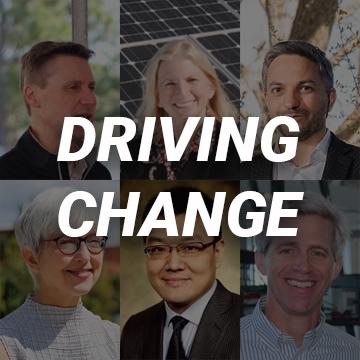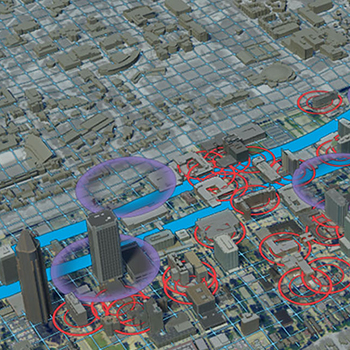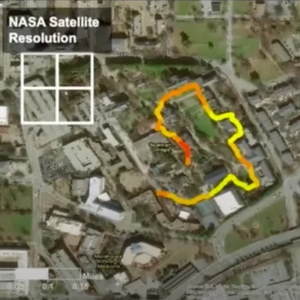Sustainable Cities & Infrastructure
Georgia Tech researchers are leaders in the study of large infrastructure systems including energy production and power grids, water systems, transportation and communication networks, and structures and buildings. They emphasize quality growth and work to improve energy access, mobility, housing, accessibility, and health simultaneously in urban and rural environments. Increasingly, their work leverages sensing at scale, computing, and data analytics to model and analyze human experiences and resource use in the built environment. BBISS brings together research teams including architects, planners, engineers, data scientists, policy experts, and others who work together to lay the foundation for tomorrow’s resilient, resource-efficient, and livable cities and communities.
Research Highlights
Driving Change: Georgia Tech Experts Lead in Electrification of America’s Roads
With historic investments from major players in the EV space, including Rivian, Kia, and Hyundai, the state of Georgia is uniquely positioned to serve as a leader in this effort. As the state's leading research institute, Georgia Tech is on the cutting edge of the movement. The transportation sector is the largest greenhouse gas emitter in the U.S. at nearly 30%, with passenger vehicles accounting for around 80% of the sector's total output1 as of 2019. Electric vehicles are widely regarded as a budding solution to reduce emissions, but even as both demand and production continue to increase, EVs currently account for around 1% of the cars on America's roadways.
Research Centers and Institutes
Center for Spatial Planning Analytics and Visualization
CSPAV develops and applies geospatial technologies to help communities prepare for economic, social, and environmental uncertainties. Our work has a significant impact on planning, maintaining, and evaluating crucial infrastructure for sustainable, long-lasting urban growth.
Urban Climate Lab
The Urban Climate Lab is a group of researchers at Georgia Technology who are exploring the connections between climate change and the built environment. This work serves to highlight the range of mechanisms through which land use change, both within and outside of cities, is driving ongoing warming trends and impacting human and environmental health. Globally, urbanized areas account for the majority of the human population but have received relatively little attention in climate change research. The UCL integrates expertise in the realms of environmental science, urban design, and public health to develop urban heat management strategies for cities.
Energy, Policy, and Innovation Center
The Energy, Policy, and Innovation Center operates as a division of the Strategic Energy Institute at the Georgia Institute of Technology. It was created to provide an unbiased and interdisciplinary framework for stimulating innovation in energy policy and technology for the Southeast region of the United States. Although based on the campus of Georgia Tech, the center will tap into regional and national expertise within academia, businesses, non-governmental organizations (NGO), and research facilities.
Researcher Spotlight
Jian Luo
Professor, School of Civil and Environmental Engineering, BBISS Initiative Lead for Coastal Urban Flooding
Dr. Jian Luo completed his undergraduate and M.S. studies at Tsinghua University, Beijing, where he received a B.Sc.(Eng.) and a M.S. degree in Environmental Engineering in 1998 and 2000, respectively. He completed his Ph.D. in 2006 in Department of Civil and Environmental Engineering at Stanford University, California. Dr. Luo's research involves field, theoretical, and computational investigations of flow and reactive transport in subsurface; development and application of geostatistical methods for the spatial and temporal analysis of hydrogeologic and biochemistry data; development of computational algorithms and programs to simulate subsurface flow and reactive transport, and to assess the associated uncertainty; inverse modeling to estimate flow and transport parameters under uncertainty; and use of such computational methods and models to assess subsurface contamination, and to aid the optimal design of groundwater remediation operations.








